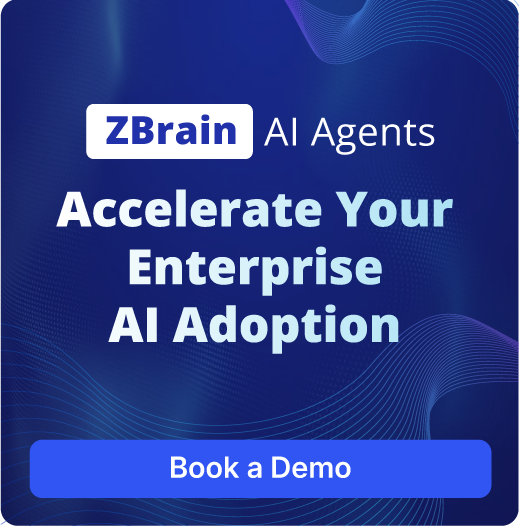Each draft includes essential elements such as execution steps, risk considerations, testing protocols, and rollback procedures. This structured outline acts as a starting point for IT teams and change advisory boards, allowing them to review and refine the plan while maintaining alignment with internal compliance and quality standards. The agent’s use of contextual references ensures consistency across change records and helps preserve institutional knowledge.
By reducing the manual burden of drafting plans from scratch, the agent enables faster change cycles, minimizes planning errors, and improves coordination across stakeholders. It supports ITSM workflows by delivering ready-to-review plans directly into collaboration tools or service management platforms—bringing clarity, speed, and rigor to change implementation efforts.
Accuracy
TBD
Speed
TBD
Input Data Set
Sample of data set required for Change Plan Drafting Agent:
Request Date: 2025-05-27
Requested By: John Doe
Department: IT Operations
Change Type: Software Deployment
Change Scope: Deploy new Human Resources Management System (HRMS) v3.1.0 to production environment. This includes database schema updates, application server configurations, and user interface customization.
Affected Systems:
HRMS_PROD_DB01(Oracle Database 19c)HRMS_PROD_APP01(WebLogic Server 14c)HRMS_PROD_APP02(WebLogic Server 14c)HRMS_PROD_WEB01(Nginx Reverse Proxy)ACTIVE_DIRECTORY_PROD(User Authentication)
Priority: Critical
Details: Upgrade to latest HRMS version to address security vulnerabilities, introduce new features (e.g., enhanced performance management module), and improve system stability.
Pre-approved Downtime Window:
- Start: 2025-06-15 00:00 PST
- End: 2025-06-15 04:00 PST
Associated Tickets:
- INC000987654 (Security Vulnerability identified in HRMS v3.0.0)
- REQ000456789 (New Feature Request - Performance Management Module)
Deliverable Example
Sample output delivered by the Change Plan Drafting Agent:
Draft Change Plan - CRQ000123456
Generated On: 2025-05-27 15:10 PST
Change Title: Production Deployment of HRMS v3.1.0
Change ID: CRQ000123456
Implementation Lead: Jane Smith (IT Operations)
Reviewers/Approvers:
- David Lee (Change Advisory Board Lead)
- Sarah Chen (HR Department Lead)
- Michael Brown (IT Security)
1. Implementation Steps and Timeline
Phase 1: Pre-Implementation (2025-06-01 - 2025-06-14)
- Step 1.1: Finalize HRMS v3.1.0 build and deployment packages.
- Owner: Development Team
- Due Date: 2025-06-05
- Step 1.2: Conduct pre-deployment configuration review with HR and IT Security.
- Owner: IT Operations, HR, IT Security
- Due Date: 2025-06-07
- Step 1.3: Complete UAT and obtain sign-off from HR Department.
- Owner: HR Department, QA Team
- Due Date: 2025-06-10
- Step 1.4: Backup all affected production systems (database, application servers, configuration files).
- Owner: Database Administration, Server Administration
- Due Date: 2025-06-14 23:00 PST
Phase 2: Deployment Window (2025-06-15 00:00 - 04:00 PST)
- Step 2.1 (00:00 - 00:15): Announce system downtime to end-users via internal communication channels.
- Owner: IT Communications
- Step 2.2 (00:15 - 00:30): Shut down HRMS application services on
HRMS_PROD_APP01andHRMS_PROD_APP02.- Owner: Server Administration
- Step 2.3 (00:30 - 01:30): Execute database schema updates on
HRMS_PROD_DB01.- Owner: Database Administration
- Step 2.4 (01:30 - 02:30): Deploy HRMS v3.1.0 application code and configuration files to
HRMS_PROD_APP01andHRMS_PROD_APP02.- Owner: Application Deployment Team
- Step 2.5 (02:30 - 03:00): Configure Nginx reverse proxy for HRMS v3.1.0.
- Owner: Network Operations
- Step 2.6 (03:00 - 03:30): Start HRMS application services on
HRMS_PROD_APP01andHRMS_PROD_APP02.- Owner: Server Administration
- Step 2.7 (03:30 - 04:00): Conduct post-deployment verification and smoke testing.
- Owner: QA Team, IT Operations
Phase 3: Post-Implementation (2025-06-15 onwards)
- Step 3.1: Monitor system performance and logs for initial 24 hours.
- Owner: IT Operations, Monitoring Team
- Step 3.2: Provide ongoing support for any user-reported issues.
- Owner: IT Helpdesk
- Step 3.3: Conduct post-mortem review of change implementation.
- Owner: Change Management Team
- Due Date: 2025-06-22
2. Testing and Validation Requirements
- Unit Testing: Completed by Development Team during build phase.
- Integration Testing: Completed by QA Team in staging environment.
- User Acceptance Testing (UAT): Completed by HR Department in UAT environment.
- Regression Testing: Post-deployment, focus on core HRMS functionalities (payroll, employee records, leave management).
- Smoke Testing: Post-deployment, verify application accessibility, login functionality, and key module loading.
- Performance Testing: Conducted in staging environment; confirm no performance degradation compared to previous version.
Change Plan Status: DRAFT
Additional Details for Review:
- Contextual References:
Knowledge Base Article 12345: HRMS deployment guide best practices.Historical Change Log CRQ000012345: Lessons learned from similar HRMS upgrade in 2023.Risk Assessment Document ITSEC-R001: General application deployment risk matrix.Compliance Standard ISO27001-C3.4: Information security controls for system changes.
- Automation Opportunities:
- Consider using Ansible or Terraform for infrastructure configuration steps.
- Explore CI/CD pipelines for automated application deployment.
- Communication Plan:
- Pre-downtime notification to HR and all employees via email and internal portal.
- Downtime notification during the maintenance window.
- System availability notification upon successful deployment.
- Post-deployment briefing for key stakeholders.
Note: This is a first draft. Review by subject matter experts is required for customization and final approval.

Code Assistance Agent
Provides instant, contextual guidance to help debug code, resolve errors, and improve your programming workflow.

Security Questionnaire Automation Agent
Automates security questionnaire answers using LLMs and a structured knowledge base for faster, consistent, and reliable responses.

Change Plan Drafting Agent
Generates initial implementation and testing plans for change requests by analyzing request details and referencing past changes.

Contextual Triage Agent
Automatically collects and consolidates contextual information from logs or monitoring tools to enrich incident or request tickets, accelerating root cause analysis and resolution.

License Audit and Optimization Agent
The License Audit and Optimization Agent scans software usage data to identify underused licenses and recommends cost-saving actions like downgrades or removals, optimizing license allocation and reducing costs.

SLA Compliance Monitoring Agent
Automates the monitoring of Service Level Agreements (SLAs), ensuring that IT services meet agreed-upon performance metrics and alerting teams when SLAs are breached.
